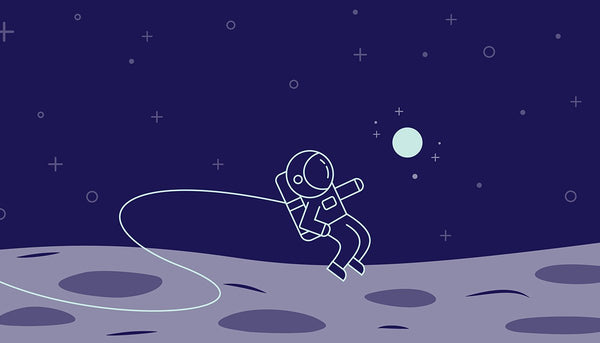
Human-centered design enables us to create solutions that meet real user needs and produce future-forward products and services. The first step is gathering insights—using tools like observation and interviewing to collect information about the people you’re designing for to build empathy and uncover learnings about their needs and challenges. While designers practice this often when designing for a community or user, how might we use this practice when designing for ourselves?
Research shows that we view our future selves as strangers. There’s a disconnect between the objective truth that we will age over time and the ability for people to feel like their future self is a real person.
Just as it’s imperative to build empathy for users when designing solutions to meet their needs, could we make better decisions by building empathy for our future selves?
Motivation is about more than positive thinking and logic
Researcher Hal Hershfield first used fMRI technology to document this phenomenon of disconnection between our present and future by testing subjects’ willingness to put money towards retirement. He found that subjects shown aged avatars of themselves put nearly twice as much toward retirement. Daniel Goldstein also studied the impact of using visuals of our future selves to encourage financial planning. The challenge, he found, was in getting people to use their imagination to envision a more vivid picture of themselves in the future. The more real and concrete you can make this image, the more impactful it will be on your decision making.
In addition to visioning, mental contrasting is another method that can enable progress towards an outcome. Beyond picturing your ideal future self, imagining the challenges you’ll encounter on the way toward achieving your goals can be powerful in motivating you to keep working toward them. You won’t feel as surprised or defeated when obstacles inevitably arise, and you’ll have planned solutions and resources ahead of time to help you overcome them. Studies have shown that positive thinking alone can actually hinder progress by giving people the feeling of accomplishment before taking any action.
How does this translate to business solutions?
IDEO found a clear example of this future-self dissonance when working with MassMutual to design the Society of Grownups, a digital company that aims to educate millennials on the basics of personal finance and financial wellness. When researching millennial spending and saving habits, they found that in addition to money feeling like a scary topic, this demographic balked at saving because the long-term gain felt less important than the negative impact it would have on their current income. The program created tools to help them visualize their future financial situation and plan ahead.
Automobility is another concept IDEO created several years ago to envision the future of transportation and the automobile. An online visualization of how life with driverless cars might really look and feel, the provocation aims to help us see what the future may bring so that we’ll be better prepared to make smart decisions as that future approaches. Automobility taps into storytelling and strong visual imagery to bring the future to life and motivate us to make good decisions beyond making the rational or logical argument.
Putting visioning and empathy into practice for yourself
So how can we turn these tools around and focus on our future selves as the audience we’re designing for? Many of the tools used in design thinking are applicable through this lens. Instead of observing or interviewing a subject, think of yourself in five or 10 years. Try these two activities to gain insight into your future you.
Observation — Imagine a day in your life five years from now. Spend time noticing all the details of your future life. What job are you doing? What hobbies are you enjoying? What’s a day in your life like, from opening your eyes in the morning to getting ready for bed? Now draw a picture of your future self, including images of all the details of your ideal day.
Interviewing — Pair up with a friend or colleague and interview each other. Take on the persona of your future self that you’ve created so clearly with the visioning observation exercise. Your partner should ask you what your life looks like, including questions about challenges you’ve overcome to get there and advice you’d give your younger self.
These activities can be applied in both a personal and professional setting. As a leader, you can guide your team through a group discussion about what the ideal future would look like—resources everyone would have available, accomplishments the team would achieve, and obstacles you’d have conquered along the way. This can spur curiosity and excitement for what’s to come and set up a more detailed discussion as you go into planning for the new year and setting team goals.
As the world changes, it will be even more important to look ahead and imagine what challenges we’ll face. What skills will you need to be your best future self? As the trend toward a technologically enabled society continues, a human-centered, empathic approach will be even more necessary.
Get an introduction to human-centered design with our on-demand Hello Design Thinking class and Insights for Innovation course that dives deeper into observation, interviewing, and empathy-building skills.
- choosing a selection results in a full page refresh
- press the space key then arrow keys to make a selection



